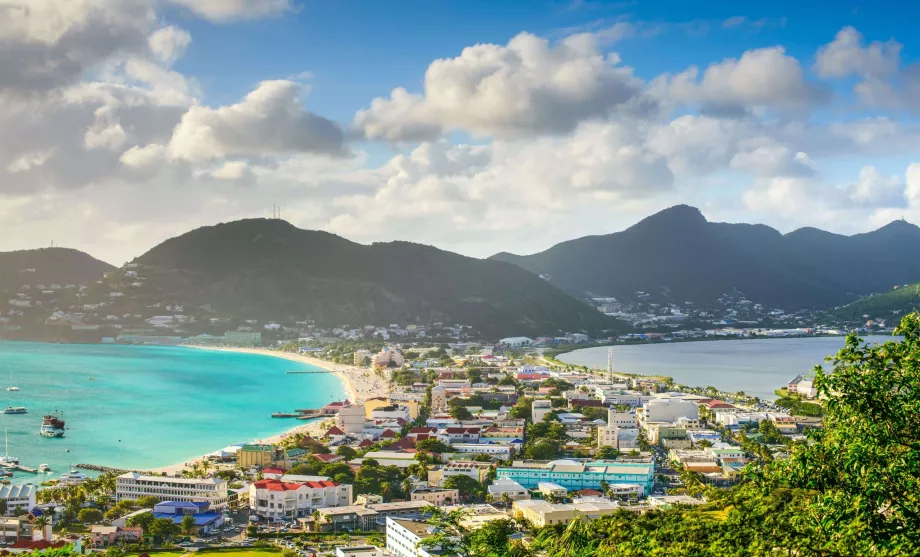Car rental in Sint Maarten

As in France or the Netherlands, driving on the right is also common here.
Travelling around St Martin by car is quite stressful and exhausting because of the constant and very long traffic jams. However, if you want to explore something other than Maho Beach or the towns, a car will definitely come in handy.
How and when to book a car on St. Martin
There are many large multinational car rental companies and smaller local ones operating on St. Martin. Renting a car here is just like in any other civilized country.
Nevertheless, it has a specificity in the form of a shortage of cars. Book a car at least 2-3 months in advance, especially in the December-April period. Otherwise, you run the risk that realistically none of the car rental companies will have spare capacity and you will end up completely without a car, resulting in a complete overhaul of the program.
We've had a particular good experience with Sixt, Avis or AutoUnion.
Prices of car rentals Saint Martin
St. Martin is one of the more expensive destinations within the Caribbean, but car rental prices are relatively reasonable if you book at least 3 months in advance.
Prices also vary by season.
- Weekly rental peak season (December to March): from 490 USD for the smallest car
- Weekly rental low season (April to June): from 270 USD for the smallest car
- Weekly rental off-season (July to November): from 240 USD per smallest car
- Compare rental prices at SXM Airport
- Compare rental prices at Grand Case Airport
Prices for larger SUVs are up to 3 times that of the smallest cars.
As elsewhere in the world, the longer the car rental, the lower the price per day.
In addition, it is advantageous to book a car at least 2-4 months in advance. Conversely, if you book for more than 7 months, you will see fewer offers and it pays to wait.
International driving licence and other documents
To rent a car in St. Martin, you will need a national driving licence and you must always carry an international driving licence with you.
On St Martin, most car rental companies still require a credit card. They usually charge a deposit of around 1 200 usd.
Petrol prices and petrol stations
Gasoline is expensive on St. Martin. Prices are almost identical in the French and Dutch parts.
European units of measure are used here, so all prices are per litre.
Petrol prices range from 1,50 usd to 1,65 usd per litre. In the French part the price is always given in euros, in the Dutch part the price is always given in Antillean guilders, however 99% of drivers pay in US dollars. The operator always converts the price according to a fixed exchange rate, which does not change.
How do the petrol stations on St. Martin work?
There is a good density of petrol stations on St. Martin, and you can find a petrol station in every major town in the Dutch and French part of the island.
All petrol stations here are manned, there are no self-service ones yet.
Just pull up to a stand, open the tank and tell the attendant how much you want to fill up. Either in litres or in maximum monetary value, or just say "full tank please".
Payment can always be made in cash and in the vast majority of cases also by card. You pay directly to the attendant who fills your tank, so you don't have to leave the car at all.
Most petrol stations are equipped in the same way as everywhere else: a small shop with snacks and car accessories, or a café.
Quality and road markings
There are no motorways on St Martin and only one main ring road around the whole island.
The quality of the roads here is significantly better than on other Caribbean islands, but worse than in the USA or Europe.
The roads often have no horizontal markings and the shoulders are sometimes unstable.
A big tricky thing for drivers is the slowdown thresholds, which can appear in completely unexpected places (for example, completely illogical when leaving the main road or behind a horizon or a curve). In most cases, these speed bumps are not marked at all.
The traffic signs on both sides of the island are of European format.
Traffic regulations
On St. Martin, the right-hand traffic is allowed.
Drivers are quite considerate and it is quite common to let cars coming out of secondary roads onto the main road.
There is no need to worry about dangerous fast driving or nervous overtaking if you drive more carefully than the locals. When overtaking, drivers will usually honk at you, but this is normal here: they are just letting you know that they have decided to overtake and the courtesy is to slow down or pull more to the side of the road.
If a driver honks at you after you let them off the side of the road, this is a sign of thanks.
Speeds
Speeds are measured in kilometres per hour and the maximum speed limits are as follows:
- In built-up areas - 50 km/h (about 32 mph)
- Outside a built-up area - 60 km/h (approx. 37 mph)
Especially in the French part, the speed outside the village is often raised to 70 km/h by a sign.
Due to the heavy traffic, frequent slowdown thresholds and the high density of villages, you will rarely be able to exceed the speed limit.
Priorities and roundabouts
At junctions not controlled by traffic lights or signs, the right-hand right of way applies.
Roundabouts are common, where the car travelling on the roundabout always has the right of way. It is very common to have several lanes at roundabouts, always keep strictly to the traffic signs. You should always use your turn signal when leaving a roundabout, but in practice no one does.
Alcohol, seat belts and talking on the phone
Wearing seatbelts is compulsory and talking on the phone while driving is strictly forbidden. Earphones are not allowed either.
There is zero tolerance for blood alcohol while driving on St Martin.
Traffic density
Traffic density is insane on St. Martin, especially in the strip from Philipsburg through Cole Bay and the airport to Marigot.
Often long queues form that are completely stationary for many minutes, and the drive from Maho Beach to Philipsburg can sometimes take up to 2 hours.
The queues are random. They do not form every day and are not equally slow every day. The worst situation tends to be in the Simpson Bay and Cole Bay area.
On the other hand, the eastern and northern side of the island tends to be passable without any problems and traffic is not too heavy in these areas.
Parking
While the very heavy traffic makes it difficult to travel around St. Martin by car, the parking options are, on the other hand, a very positive thing.
Parking is free on almost all streets or in parking lots.
There is paid parking at Maho Beach, for example, but you can park for free at all other beaches or tourist attractions.
You can also easily find a space in the towns along the streets or in the large car parks along the main road in Philipsburg or at the harbour in Marigot.
Any questions left?
If you have any questions or comments about the article...

